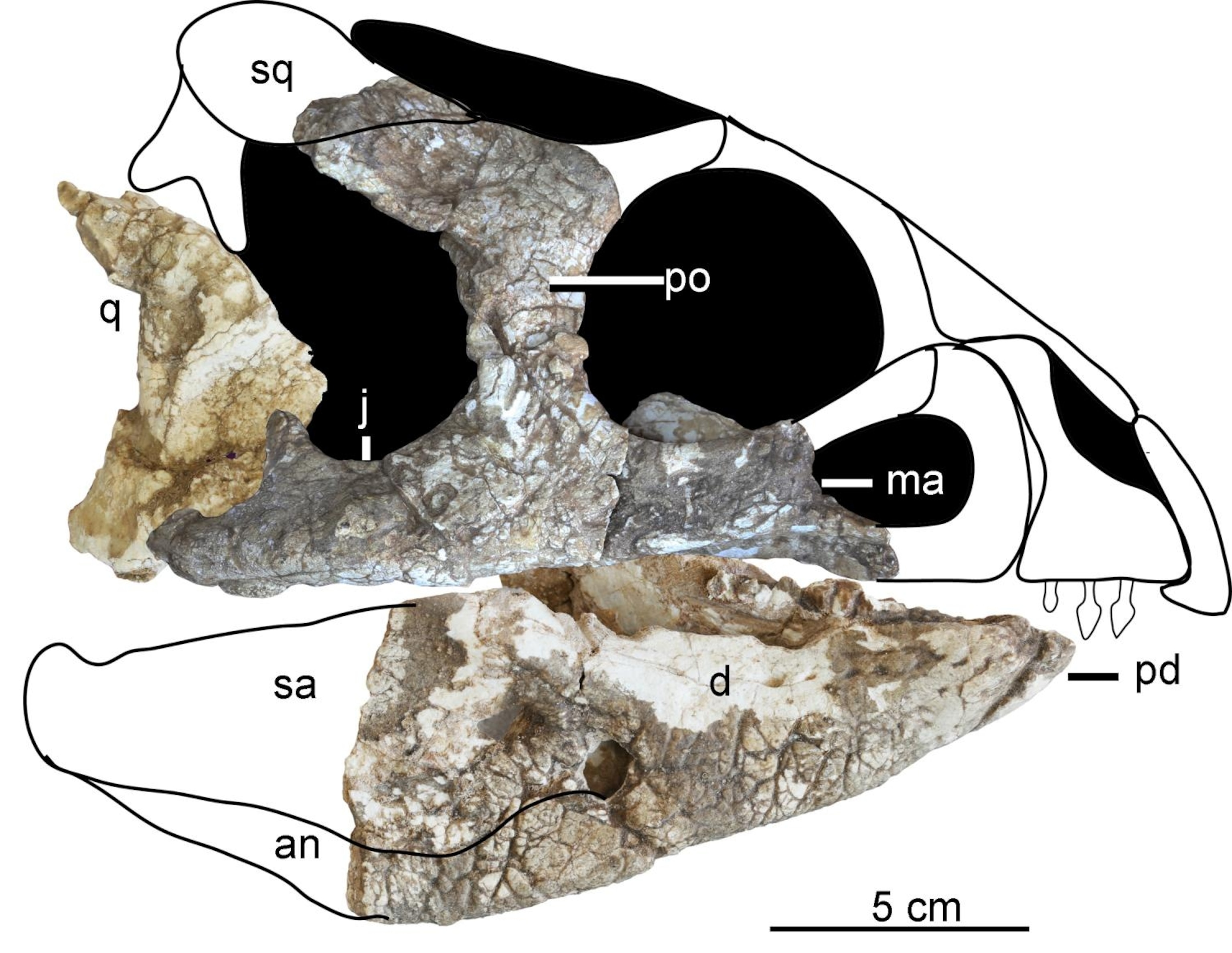The ceratopsians are among our favorite dinosaurs. These great horned herbivores included Triceratops, Styracosaurus, and Pentaceratops in their ranks, as well as celebrated newcomers like Nasutoceratops. But these were only some of the largest and last of their kind. A new find, reported by paleontologist Genglu Han and colleagues, is a reminder that ceratopsians started off small.
The new dinosaur, found in the Late Jurassic rock of northwestern China, has been named Hualianceratops wucaiwanensis by the researchers. And while it looked relatively similar to another early horned dinosaur found in the same formation, Yinlong downsi, the skull pieces of Hualianceratops justify its identification as something different. And this has some important implications for the way horned dinosaurs evolved.
The new family tree of early ceratopsians proposed by Han and coauthors suggests that horned dinosaurs were undoing a rapid radiation right after they stepped onto the evolutionary stage. There were as many as five different ceratopsian lineages in the Late Jurassic, the paleontologists propose, setting the foundation for the evolution of later, better-known forms such as Psittacosuaurus, Protoceratops, and, of course, Triceratops and company.
Hualianceratops is therefore a part of an emerging view that the Late Jurassic was something of a proving ground for the sorts of dinosaurs that would rule the Late Cretaceous tens of millions of years later. Horned dinosaurs, tyrannosaurs, and ankylosaurs all got their start in the Late Jurassic, often as smaller and meeker-looking species than their more famous relatives. There wasn’t a wholesale shift between the Jurassic and Cretaceous worlds. As far as dinosaurs were concerned, the two menageries are connected by evolution, ecology, and time.

Fossil Facts
Name: Hualianceratops wucaiwanensis
Meaning: Hualianceratops means “ornamented horned face”, while wucaiwanensis refers to the area of China where the dinosaur was found.
Age: Between 162 and 159 million years old.
Where in the world?: Xinjiang, northwestern China.
What sort of critter?: An early ceratopsian, or horned dinosaur.
Size: The complete skull is estimated at 9.8 inches long. The whole dinosaur would have been slightly larger than Yinlong, another early horned dinosaur.
How much of the creature’s body is known?: A partial skull, lower jaw, left foot, and associated fragments.
Reference:
Han, F., Forster, C., Clark, J., Xu, X. 2015. A new taxon of basal ceratopsian from China and the early evolution of Ceratopsia. PLOS ONE. doi: 10.1371/journal.pone.0143369
Previous Paleo Profiles:
The Unfortunate Dragon
The Cross Lizard
The Cross Lizard
The South China Lizard
Zhenyuan Sun’s dragon
Zhenyuan Sun’s dragon
The Fascinating Scrap
The Fascinating Scrap
The Sloth Claw
The Hefty Kangaroo
Mathison’s Fox
Scar Face
The Rain-Maker Lizard
“Lightning Claw”
The Ancient Agama
The Hell-Hound
The Hell-Hound
The Cutting Shears of Kimbeto Wash
The False Moose
“Miss Piggy” the Prehistoric Turtle
Mexico’s “Bird Mimic”
The Greatest Auk
Catalonia’s Little Ape
Pakistan’s Butterfly-Faced Beast
The Head of the Devil
Spain’s Megatoothed Croc
The Smoke Hill Bird
The Vereda Hilarco Beast
The North’s Sailback
Amidala’s Strange Horn
The Northern Mantis Shrimp
Spain’s High-Spined Herbviore

